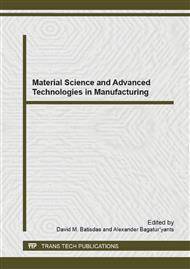p.735
p.740
p.745
p.749
p.757
p.764
p.768
p.772
p.776
Ecological-Economic Values of Lignocellulosic Herbaceous Plant on Contaminated Land
Abstract:
Lignocellulosic herbaceous plant is a high-quality kind of biomass resource. In China, large-scale cultivation of lignocellulosic herbaceous plant on marginal land is a crucial method to resolve sustainable supplement of biomass feedstock. In order to analyse its potential, this research conducted large-scale cultivation of four species of lignocellulosic herbaceous plant, switchgrass, silver reed, giant reed and hybrid pennisetum on a contaminated land in Beijing suburb. And a quantitative analysis of their biomass yields and ecological-economic values were performed in the sequential four growing seasons. With high annual biomass yields, 21.37 ton·hm-2, 26.21 ton·hm-2, 44.48 ton·hm-2 and 57.61 ton·hm-2, respectively, these four species of lignocellulosic herbaceous plant had enormous ecological values, including carbon fixation, oxygen release, sulfur dioxide absorption and dust retardment, and considerable economic values, according to standard coal conversion and cellulosic ethanol production. Of these four species, hybrid pennisetum is optimal in ecological value on contaminated land in the future, while giant reed in economic value.
Info:
Periodical:
Pages:
757-763
Citation:
Online since:
January 2014
Authors:
Price:
Сopyright:
© 2014 Trans Tech Publications Ltd. All Rights Reserved
Share:
Citation:


